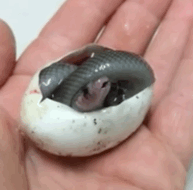While he may be rolling in his grave to discover that he was not the first person to be able to talk to animals, Doctor Doolittle would almost certainly be a keen advocate of World Animal Day which takes place on the Feast of St Francis of Assisi, October 4th. Started in 1931 in Italy, this annual celebration of all things furry is now a popular day in which we remember the important role that animals have to play in our world, as well as the people who devote their lives working to protect and care for them. To get into the festive mood on October 4th you are encouraged to ditch the fur fabrics, refuse to buy products tested on animals and – probably of greater concern to the majority of folk – convert to vegetarianism.

Word of the Day
| |||
| Definition: | (noun) A translucent quartz spangled with bits of mica or other minerals. | ||
| Synonyms: | aventurine | ||
| Usage: | He loved the red gold of the sunstone, and the moonstone's pearly whiteness, and the broken rainbow of the milky opal. | ||
Idiom of the Day
have a say (in something)— To have an active and participatory role in making or influencing a decision about something. |
History
Sputnik 1 Launch Begins the Space Race (1957)
The first artificial satellite, Sputnik I, was launched by the USSR in 1957 and spurred the dormant US space program into action, leading to an international competition popularly known as the "space race." Explorer I, the first American satellite, was launched just months later, in January 1958. In the decade that followed, the US and the USSR launched approximately 50 space probes between them to explore the Moon.
Rutherford B. Hayes (1822)
After fighting in the Union army in the American Civil War, Hayes served in the US House of Representatives and then as governor of Ohio. In 1876, he won the Republican nomination for president. His opponent, Samuel Tilden, won a larger popular vote, but the election was so close that a special commission had to decide the issue. It eventually ruled in Hayes's favor.
Fiesta of San Francisco (San Pacho)
In Quibdó, Colombia, the Fiesta of San Francisco is one of the biggest celebrations of the year. The procession on October 4 is the highlight of the festival, but several days of sports—including boxing, horse racing, cycling, and pig-catching contests—precede this. The streets are filled with people dressed up as devils, savages, and various animals, and there are dancing and fireworks every night. On the final day, there is an afternoon procession, in which everyone accompanies the statue of St. Francis as it is carried through the streets of Quibdó.
How a Strange Triassic Reptile Could Change What an Arm Looks Like
Most forearms look the same. Whether the animal is a human, a cat, or even a Tyrannosaurus rex, the same bones attach in about the same places to form roughly the same shaped limb.READ MORE:
1535 - The first complete English translation of the Bible was printed in Zurich, Switzerland.
1648 - The first volunteer fire department was established in New York by Peter Stuyvesant.
1881 - Edward Leveaux received a patent for the player piano.
1893 - The first professional football contract was signed by Grant Dibert for the Pittsburgh AC.
1895 - The first U.S. Open golf tournament took place in Newport, RI. Horace Rawlins, 19 years old, won the tournament.
1927 - The first actual work of carving began on Mount Rushmore.
1931 - The comic strip "Dick Tracy" made its debut in the Detroit Daily Mirror. The strip was created by Chester Gould.
1933 - "Esquire" magazine was published for the first time.
1957 - "Leave it to Beaver" debuted on CBS-TV.
2004 - SpaceShipOne reached an altitude of 368,000 feet. It was the first privately built, manned rocket ship to fly in space twice within a two week window. The ship won the Ansari X Prize of $10 million dollars for their success.
DAILY SQU-EEK
Frieze London
Oct 6-9, 2016 | London, United Kingdom
About This Festival
Frieze London is a premier contemporary art fair showcasing the work of leading artists from around the world. The event also hosts film screenings, musical performances, panel discussions, debates and keynote speakers featuring leading figures from the art world. A recent addition focuses on performance-based installations, and a variety of guided tours provide an excellent introduction to the event.
Riley Festival
Oct 6-9, 2016 | Greenfield, IN
About This Festival
The Riley Festival hosted in Greenfield, Indiana, celebrates the birthday of local legend James Whitcomb Riley with a massive craft festival. Every year, the theme of the festival is based on one of Riley's many poems such as "The Raggedy Man." Guests can enjoy numerous activities including food and beverage vendors, a flea market, a parade and four days of live music performances.
VIA Festival
Oct 6-9, 2016 | Pittsburgh, PA
About This Festival
The VIA Festival is an explosion of creativity and one of the most unique festivals you will ever attend. Video, music and technology coalesce to become one giant monster of kick-ass artistic vision. Artists from around the world bump their custom work, provide talks and lectures on their art and share special projects to inspire your own creativity.
Pictures of the day

Michael Mullen (b. 1946) is a retired United States Navy admiral who served as the 17th Chairman of the Joint Chiefs of Staff from October 1, 2007, to September 30, 2011, having previously served as the Navy's 28th Chief of Naval Operations. He was only the third officer in the Navy's history to be appointed to four different four-star assignments. Mullen retired from the Navy after over 43 years of service, later serving as a visiting professor at Princeton University.
Not Sure If Dog or Mop

Meet ‘Beast’, Mark Zuckerberg’s adorable Hungarian Puli sheepdog
knit
knit
knit, 6 - 24 mths
knit
knit
crochet
crochet
crochet
crochet, vintage
crochet

RECIPE, vegan
CROCKPOT RECIPE
SWEETS, halloween
ADULT COLORING
Drawing of leaves constituting a majestic cat head

CRAFTS
CHILDREN'S CORNER ... artwork
PUZZLE
|

QUOTE


CLEVER
EYE OPENER
10 Easy Questions We Still Don’t Know The Answer To
listverse
We know that science doesn’t have the answers to everything, but seeing that the future is almost here, there are some questions we really expected it to have answered by now.
10How Does Turbulence Work?
Everyone has gone through a flight where the pilot asks you to tighten your seat belts because of excessive turbulence, but even though it is so important to things like air safety, we just have no idea how it works. It has perplexed scientists to such an extent that Einstein once famously said, “Before I die, I hope someone will clarify quantum physics for me. After I die, I hope God will explain turbulence to me.”
The problem is aggravated by the fact that wherever the need to study turbulence arises—like in jet propulsion—chemical reactions take place alongside the high pressure and extreme conditions, which makes it difficult for researchers to study the exact conditions needed to produce turbulence. If somehow we could figure it out, it could be applied to a variety of uses since turbulence occurs everywhere in nature. Maybe one day we’d even be able to predict hurricanes or other natural disasters with accuracy, thus minimizing the damage and finally scoring one over nature.
9Why Do Cats Purr?
We’ve shown before that cats don’t always purr when they’re happy, but the mystery goes way deeper than that. There is no purring organ in the throat of a cat, and even though extensive research has been done on the function itself, the exact origin of the function in the anatomy of cats is still unknown.
It’s theorized that they might do it by the constriction and dilation of the larynx, but no evidence has ever been provided to prove or disprove that theory. It was, however, found that the frequency of a cat’s purr falls somewhere in the range required to accelerate bone regeneration and healing, so it might just be a healing superpower that we had no idea even existed in the animal kingdom. That might also explain why we take it to be a happy sound, as the frequency is not just beneficial for the cat—it tends to make us happier as well.
8What Causes Hypnic Jerks?
Often when we are about to fall asleep, we experience a kind of a falling sensation which causes us to wake up with a start. It happens to almost everybody, and the sensation is known as a hypnic jerk. It also sometimes happens when you tilt the chair you’re sitting on too far—somehow you can sense when you’re about to fall, and you wake up with a hypnic jerk. We really have no idea what causes them or whether they serve any modern purpose, but science has come up with some interesting theories.
One hypothesis suggests that our bodies developed this mechanism when we used to sleep on branches or high ground, and it was meant to help us avoid a fall. But there is no evidence to support it, and humans rarely slept on trees or precarious cliffs as a matter of habit. Other theories suggest that it happens because of the slowing down of the body’s processes when you fall asleep, but again, there are no scientific studies to support that claim either.
7How Exactly Do Magnets Work?
Magnetism is a widely observed phenomenon in our universe, but a lot of things about it remain unexplained. For example, why do particles charged with electricity create a magnetic field strong enough to physically move things from far away? And when they do, why exactly do they align themselves to two poles, north and south?
Explanations range from “it’s just one of those things” to particle movement at the quantum level, and MIT even has a whole laboratory dedicated to research on nothing but magnetism. We know that it’s happening, and we have a good idea of what exactly is happening, too—the particles align themselves in a way that adds up their charge in one direction, but it’s not very clear as to why the particles emit a magnetic field to start with. The fact that the Earth’s magnetic field is not well understood either further restricts our ability to understand magnetism.
6Why Do Giraffes Have Long Necks?
Many may believe that only giraffes with long necks survived evolution because they had an advantage over the other, short-necked ones, but that’s not really true. Longer necks provide no particular advantage to giraffes because they care more about the type of leaf than the height at which it’s situated. If it’s confusing to you, science doesn’t have much of a clue either. There’s just no consensus on the exact conditions that would have caused long necks to be selected positively among giraffes.
One theory is that the giraffes developed long necks as a mating trait—in other words, it helped with the ladies—but there’s not much evidence to support that hypothesis. On the contrary, big, heavy necks, no matter how good they look, would be a definite disadvantage in the wild and are sure to die out at some point in the future. Another theory says that they had to develop long necks because of long legs, but again, that theory is based less on factual evidence and more on a scientist looking at a giraffe and guessing.
5Why Do Birds Migrate?
We know that birds migrate over really long distances every year to lay eggs or to escape harsh winters. What we don’t know is how they do it at all. The migration of birds remains one of the most mysterious animal behaviors known to science, and even though they’ve been trying hard to solve it for a long time, answers haven’t been easy to come by.
Consider this: Cuckoos migrate and lay their eggs in other birds’ nests, then just fly away to their own business. When the young ones grow up, they make their way to their ancestral lands without any help whatsoever. Scientists do believe that they are able to use a variety of compasses based on the stars and the Earth’s magnetic field, but a compass can only guide you—it can’t tell you the coordinates of a location you should have no idea about. Clearly, cuckoos are one species you don’t want to mess with.
4What Causes Gravity?
Newton pioneered the study of gravity over 350 years ago, and you’d think that we’d have it all figured out by now. But the more we’ve progressed in our knowledge of the world, the more baffling gravity has become for researchers. For starters, we know the causing particle for each of the four fundamental forces of the universe—except gravity. A graviton is believed to be that particle, but we’re pretty far from actually finding it.
Another thing about gravity is that it is the weakest of all the other fundamental forces, yet if we look around the world, that doesn’t seem to be the case at all. Gravity keeps galaxies together, and it is about 1040 times weaker than the electromagnetic force. The fact that it’s so weak makes it all the more difficult to study it in the lab.
3How Do We Store And Retrieve Memories?
Science has come a long way toward understanding how our bodies work, but memories are still one of the most perplexing problems of the human anatomy. We just have no idea exactly what parts of the brain are involved in the storage of our memories, though we do know that a lot of areas of the brain are involved in the process. Even more confusing than memory storage is memory retrieval. Scientists have been looking into how our brains trace a particular memory from our memory bank since at least the ’20s, but it’s still not clear how we do it.
What we do know for sure is that it has something to do with neurons and the connections between them. When we see something that triggers a memory to be traced, many parts of the brain interact with each other simultaneously to make us remember it. Beyond that, though, the whole thing is a mystery.
2Why Do Women Go Through Menopause?
Menopause defies all the rules of evolution. The ability to reproduce in the animal kingdom ensures that the species are able to pass on their superior genes, but in humans, something weird happens. Women decisively lose their ability to pass on their lineage at the age of about 45–50, and science just doesn’t have any idea why. From an evolutionary perspective, it is always harmful for a species to completely give up their ability to reproduce, as survival by natural selection ceases to take place once that happens.
One explanation is the grandmother hypothesis, which says that after a point, women should spend more time caring for their grandchildren than their children, but the benefits of that are far inferior to the benefits of giving birth to your own children. It’s also not abundantly found in the animal kingdom. Apart from humans, only two species of whale completely stop breeding at a certain age and go on to live for a significant amount of time. Other animals that experience deteriorating sexual abilities, however, often die out soon after.
1What Are Dreams?
Dreaming is one thing that’s common to us all. It might differ in the way it happens for some of us, but it’s definitely a resident feature of all of our brains. You’d think that science would be able to figure out why our brains decide to go in LSD mode every night, but sadly, there are no definite answers as to what exactly dreams are. Some people believe that they’re just random images which serve no purpose, while others believe that they carry a deeper meaning, though we’re all pretty much guessing here.
Some theories suggest that dreams are a manifestation of things we’d rather not think about during the day, like sexual fantasies, though many modern scientists don’t agree with that. What they do agree with, however, is that dreams are most likely symbolic of something deep in our psyche, though no one can decisively say what. The jury is divided on whether they serve any purpose at all, and it looks like it’s going to take a long time for us to come to a universally accepted answer.











No comments:
Post a Comment